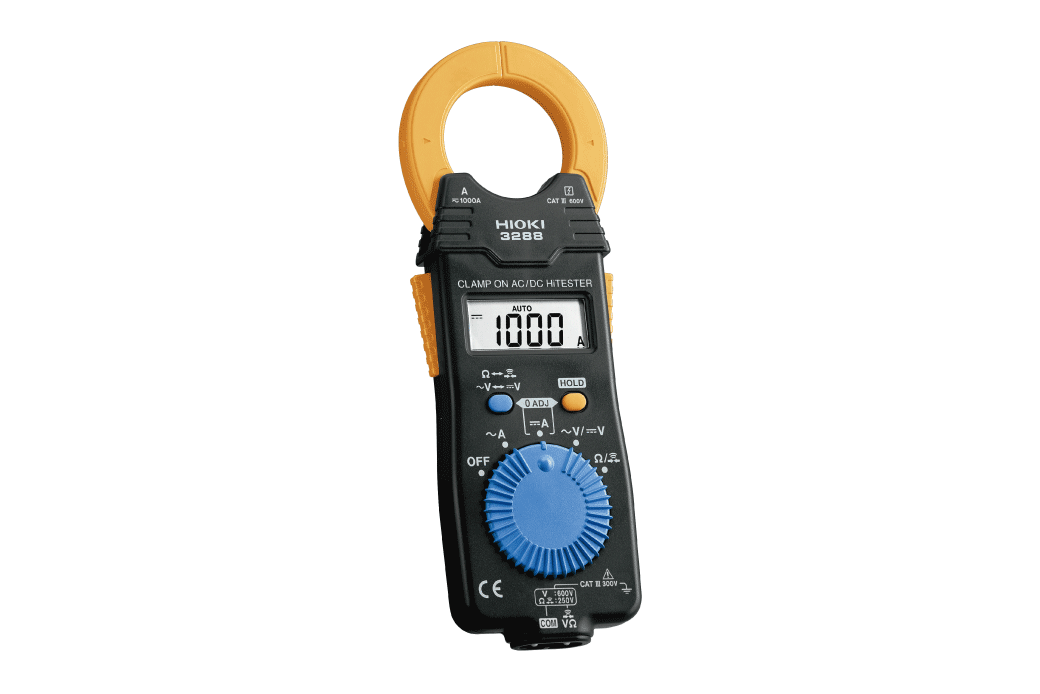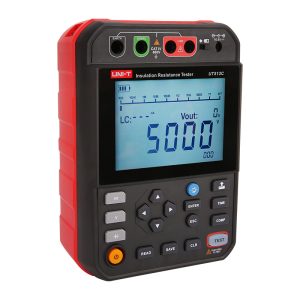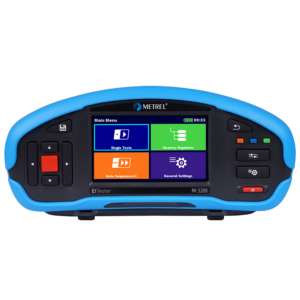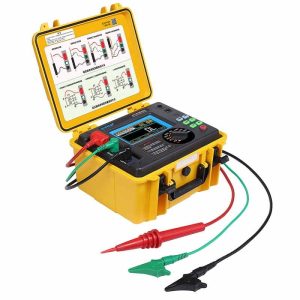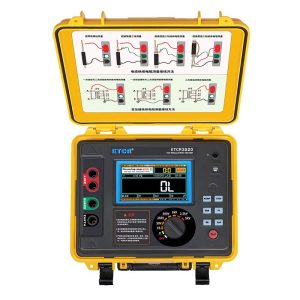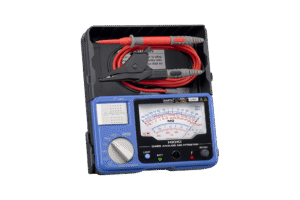The Right Tool for Modern Electrical Diagnostics
Walk onto any Australian job site and you’ll see the same challenge: crowded electrical enclosures, tight cable runs, and equipment that needs testing now – not after you’ve spent ten minutes trying to get your clamp meter into position. Whether you’re troubleshooting a solar inverter at a rooftop installation or checking motor currents in a packed industrial panel, access matters as much as accuracy.
The HIOKI 3288 solves this problem with genuine engineering intelligence. At just 16mm thick with a 35mm jaw opening, this clamp meter slips into cable bundles and around busbars where bulkier instruments simply won’t fit. But compact doesn’t mean compromised – you’re getting CAT III 600V safety rating on current measurements and the measurement versatility of a full multimeter, all in a tool that weighs just 150 grams.
AC/DC Current Measurement That Actually Works
Here’s where the HIOKI 3288 earns its place in your tool kit. Both models measure up to 1000A in AC or DC, covering everything from lighting circuits to heavy industrial motors. The key difference comes down to your typical workload:
The 3288 uses average rectified measurement – ideal for maintenance work on standard 50Hz equipment where you’re checking steady-state currents on motors, heaters, and conventional electrical loads. It’s the workhorse choice for industrial maintenance teams and commercial electricians focused on pure sinusoidal waveforms.
The 3288-20 employs True RMS measurement technology, essential when you’re working with modern electronics. Variable frequency drives, solar inverters, UPS systems, and electronic ballasts all produce non-sinusoidal waveforms that only True RMS can accurately measure. If you’re servicing renewable energy systems, data centres, or any facility with significant electronic loads, the 3288-20 gives you measurements you can actually trust.
Beyond Current: Full Diagnostic Capability
Current measurement is just the beginning. The HIOKI 3288 packs in all the functions you need for complete circuit diagnostics:
Voltage testing covers DC from 419.9mV to 600V and AC from 4.199V to 600V across multiple ranges. Check control circuits, verify supply voltages, or test battery banks without switching instruments. CAT III 300V rating on voltage measurements provides appropriate protection for most mains work.
Resistance measurement spans six ranges from 419.9Ω to 41.99MΩ, letting you verify earth continuity, check heating element integrity, or troubleshoot high-resistance faults. The continuity function provides audible confirmation at 50Ω or less – perfect for quick cable checks when you’re working in noisy environments or tight spaces where you can’t easily see the display.
Job Site Practicality Built In
HIOKI designed this clamp meter for real electrical work, not laboratory conditions. The double-jaw lever provides secure one-handed operation – critical when you’re balanced on a ladder or reaching into awkward positions. The auto-zero function on DC current eliminates drift and offset errors, so you’re not second-guessing your readings when checking battery discharge rates or DC motor loads.
Data hold freezes measurements on the 4199-count LCD when you need to record values in locations where the display isn’t visible. Auto power-save extends the CR2032 battery life to 60 hours (3288) or 35 hours (3288-20), and battery changes take seconds without tools – no searching for screwdrivers when you’re mid-job.
The slim 57mm width fits comfortably in your hand and your tool pouch. At 150 grams, you’ll barely notice it’s there until you need it. The included carrying case keeps everything organised and protected during transport.
Applications That Match Australian Electrical Work
This isn’t a meter for occasional use – it’s built to be your daily diagnostic tool across diverse applications:
Industrial maintenance teams use the 3288 for motor current checks, three-phase load balancing, and fault-finding on everything from conveyors to compressors. The 1000A range handles industrial equipment while the slim profile accesses packed motor control centres.
Solar installers rely on the 3288-20’s True RMS capability for accurate inverter output measurements and DC string current verification. Test both sides of your solar installation – DC array currents and AC inverter output – with one instrument.
Commercial electricians appreciate the combination of current measurement and full multimeter functions when commissioning switchboards or diagnosing circuit faults. Check breaker loading, verify neutral currents, and troubleshoot control circuits without juggling multiple tools.
HVAC technicians need accurate current readings on compressors, fan motors, and electronic controls. The 3288’s range of measurement functions covers everything from motor amperage to thermostat voltages in a single compact package.
Why Choose This HIOKI Clamp Meter
HIOKI brings over 80 years of electrical measurement expertise to every instrument they manufacture. The 3288 series represents practical engineering refined through real-world feedback from technicians and electricians worldwide. You’re not just buying test equipment – you’re investing in measurement confidence backed by a company that understands precision matters.
We supply both the 3288 and 3288-20 models with everything you need: meter, test leads, carrying case, and battery installed ready for work. Need calibration certification? We can arrange NATA-traceable calibration to ensure your measurements meet compliance requirements for workplace safety testing and quality assurance documentation.
Australian warranty support and local technical assistance mean you’re not dealing with overseas delays if you have questions or need service. We understand the instruments we sell because we work with the same trade professionals who use them daily.
APPLICATIONS BY TRADE
Electrical Contractors & Sparkies
Verify circuit loading during switchboard commissioning, check motor starter currents, diagnose tripping breakers by measuring actual draw versus rated capacity. The slim profile accesses crowded distribution boards where standard clamp meters simply won’t fit. Use continuity function for quick cable identification and earth bond verification during rough-in work.
Industrial Maintenance Teams
Monitor motor currents for bearing wear and overload conditions, balance three-phase loads across distribution, troubleshoot VFD-driven equipment with True RMS accuracy. The 1000A range covers large industrial motors while portable size enables testing across sprawling facilities. Resistance measurement identifies heating element failures and loose connections before they cause downtime.
Solar & Renewable Energy Installers
Measure DC string currents during commissioning, verify inverter output with True RMS accuracy, check battery charge and discharge rates. Test both DC and AC sides of solar installations without changing instruments. The 1000A DC range handles large battery banks and high-power inverter inputs common in commercial solar systems.
HVAC Service Technicians
Check compressor running currents against nameplate ratings, measure fan motor loads, verify capacitor-start motor performance, diagnose electronic control circuits. Voltage and resistance functions allow complete system diagnostics from power supply through to thermostat circuits. Compact size reaches into tight service spaces behind equipment.
Facilities & Building Maintenance
Conduct routine load surveys across building distribution, identify phantom loads and inefficient equipment, verify circuit capacity before adding new equipment. Data hold function enables single-person testing in locations where the meter can’t be easily observed. Quick continuity checks confirm earth paths during safety inspections.
Data Centre & IT Infrastructure
Monitor UPS load distribution, verify redundant power supplies drawing balanced current, check PDU circuit loading with True RMS accuracy crucial for non-linear electronic loads. The 3288-20’s True RMS measurement handles the distorted waveforms typical in modern IT environments where average-responding meters give misleading results.
